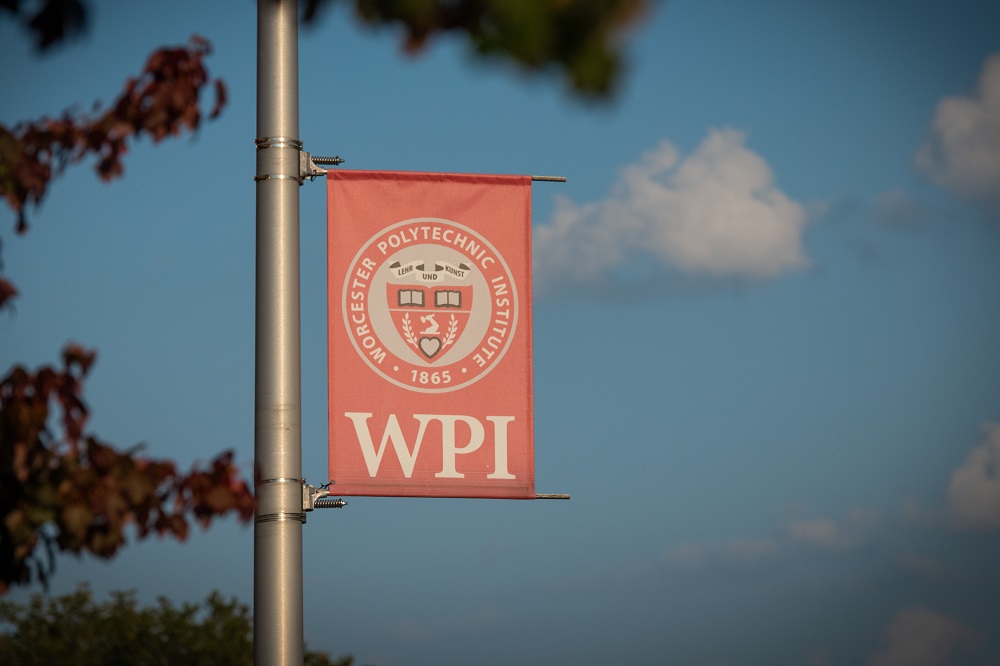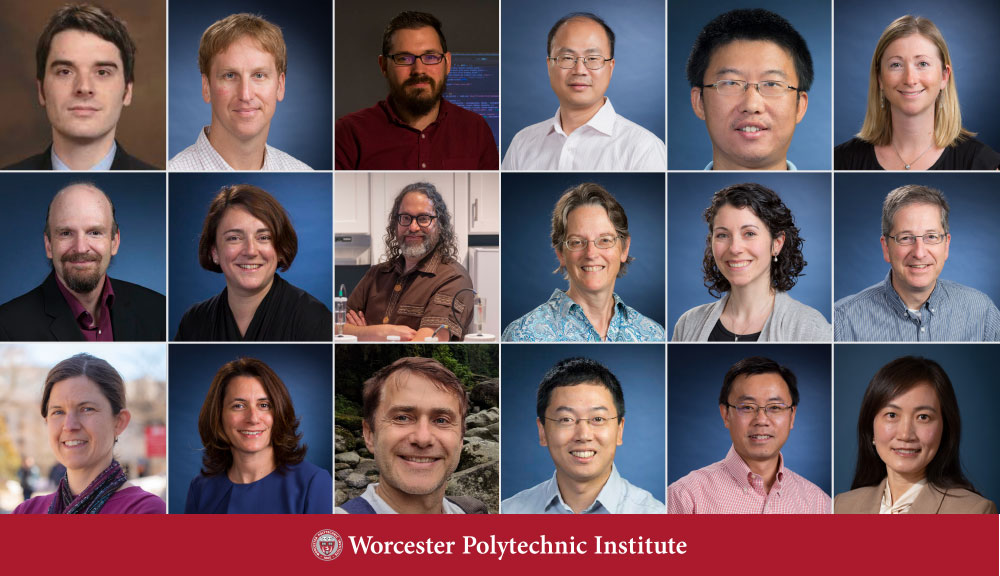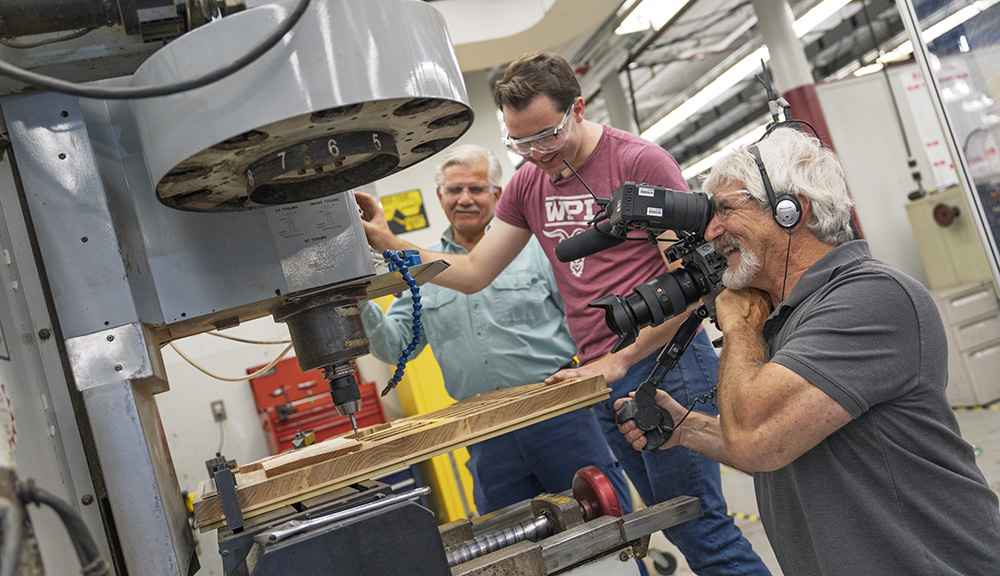Edmund Titus Cranch, 92, who served as the 12th president of Worcester Polytechnic Institute (WPI) from 1978 to 1985, died Feb. 4, 2015, in Florida, where he and his wife, Virginia, spent their winters.
Cranch joined WPI following a distinguished 30-year career in engineering education and academic administration, with much of that time spent at Cornell University, where he earned a bachelor's degree in mechanical engineering in 1945 through the U.S. Navy's wartime V-12 officer training program, a master's in mechanical engineering, and, in 1951, a PhD in mechanics, mathematics, and applied physics.
Cranch joined the Cornell engineering faculty as an assistant professor of mechanics and materials after receiving his doctorate and was promoted to associate professor in 1954 and full professor in 1956. He served as chair of the Department of Mechanics and Materials from 1956 to 1962 and chaired the Department of Theoretical and Applied Mechanics from 1962 to 1968. He was named associate dean of graduate study and research in 1967 and in 1970 he was one of the first faculty members elected to serve on the Cornell board of trustees. In 1972 he was named dean of the School of Engineering, a post he held until he was recruited to be WPI's chief executive.
Explaining his decision to accept the WPI presidency, Cranch said at the time, "I found that WPI people I met shared with me the conviction that institutions of technology and science are destined to play an increasingly important role in American higher education. WPI has pioneered the way to this greater role through the innovative and exciting WPI Plan. Its position as a leader in quality undergraduate education was certainly one of the most enticing reasons for coming."
Taking the helm less than a decade after the launch of the Plan, the Institute's transformative project-based approach to education, Cranch focused his attention on working with the faculty to fine-tune the undergraduate curriculum and to broaden WPI's academic offerings to meet the changing needs and interests of students and industry. He bolstered the relatively young program in biology and biotechnology and put his support behind a number of new graduate initiatives, including an MBA program and doctoral programs in computer science and materials science and engineering. In an early effort to develop a robust global presence for WPI's undergraduate program, new exchange programs were launched in England, Scotland, and Sweden.
Cranch, who had chaired a presidential commission on long-range financial planning at Cornell (one that produced controversial but on-target responses to the university's financial challenges), also devoted considerable effort to helping WPI navigate a time of double-digit inflation and a declining college-aged population. As part of an overall strategic planning process, he commissioned an outside frank assessment of the Institute's physical plant that identified needs for the coming decade.
Based on that assessment, the university constructed the 230-bed Founders Hall, the largest construction project in WPI's history to that point. The Washburn Shops, one of the Institute's first two buildings and the oldest building in the nation used continuously for engineering education, underwent an extensive renovation and expansion during Cranch's tenure. Funds were also raised to complete renovations of Atwater Kent Laboratories (the nation's first building for education in electrical engineering) and WPI's outdoor recreational facilities (a project that included the installation of artificial turf on Alumni Field).
In his inaugural address, Cranch had expressed admiration for WPI's longstanding ties to industry, and during his administration he helped expand those links substantially. For example, he lent his support to the founding of the Manufacturing Engineering Applications Center (MEAC), through which sponsoring companies worked with WPI faculty and students to implement automated manufacturing technology. A robotics laboratory was established in the Washburn Shops as part of the MEAC initiative. The Center for the Management of Management of Advanced Automation Technology (MAAT), established in 1980, was an industry-college cooperative that supported research on advanced management practices and flexible manufacturing, robotics, and office automation.
The late 1970s marked the dawn of the age of the personal computer, and one of President Cranch's major initiatives was to pave the way for the computerization of the campus. Rather than requiring students to purchase computers, as some schools had done, Cranch appointed a dean of academic computing and formed a campuswide committee to develop and manage a plan to thoroughly integrate personal computers into the Institute's academic and research endeavors.
WPI enjoyed balanced budgets and a strong financial picture during the Cranch years, with total revenues doubling and the endowment growing from $31.6 million to more than $60 million. Alumni giving grew threefold over that period and included the largest gift received to that point for financial aid, the $1.5 million bequest of Walter Rutman '30, received in 1983. Enrollment also grew during the Cranch presidency, as a doubling of applications helped fuel the growth of undergraduate population from under 2,400 to over 2,500 (20 percent women). The full-time graduate student body grew from 150 to 230.
During his academic career, including his years at WPI, Cranch was actively involved in engineering practice and education nationally. He served as a consultant to several leading corporations and experimental laboratories, served as a panel member studying the role of U.S. engineering schools in development assistance for the National Academy of Engineering, a published dozens of papers. He also spent time in Zurich and at Stanford as a National Science Foundation Fellow, and was an active member and officer of the American Society for Engineering Education (ASEE).
In 1985, just before formally stepping down as WPI's president, he was elected national president of ASEE. In 1993 the society honored him by naming him an ASEE Fellow. "The grade of fellow is one of unusual professional distinction and conferred by the Board of Directors upon an ASEE member with outstanding and extraordinary qualifications, and experience in engineering or engineering technology education or allied field," the society notes on its website.
Cranch was also a fellow of the American Society of Mechanical Engineers and has been at various times a member of Tau Beta Pi honorary engineering fraternity, president of the Cornell chapter of Sigma Xi, and a member of the Society of Experimental Stress Analysis. He received honorary doctorates from Villanova University (1982), WPI (1985), and the Milwaukee School of Engineering (1993). From 1983 to 1985, he was a member of President Reagan's Advisory Council on Private Sector Initiatives.
A native of Westfield, N.J., he graduated from Westfield High School and attended Newark College of Engineering for two years before enlisting as a seaman in the U.S. Navy. After graduating from Cornell, he was commissioned an ensign and served as an engineering officer aboard the light cruiser USS Providence. It was while completing his naval service that he met and married the former Virginia Harrison. Cranch worked briefly for Bell Labs as a member of the technical staff in the area of electromechanical design and development before enrolling as a graduate student at Cornell.
After stepping down as WPI president, Cranch accepted a position as founding president of the Wang Institute of Graduate Studies, in Tyngsboro, Mass. Created by An Wang, founder of the technology firm Wang Laboratories, the institute was established to meet a growing demand for highly skilled industrial software developers. Cranch went on to serve as Granite State Distinguished Professor in the University of New Hampshire System from 1987 until 1995. In retirement he was a consultant on engineering education and distance learning.
"As an aspiring musician in the 1930s, Ed Cranch frequented clubs and ballrooms in New York to learn the latest jazz arrangements," his official obituary notes. "He enjoyed recounting the thrill of being close to the bandstand when the orchestras of Duke Ellington, Fletcher Henderson, Chick Webb, and Jimmie Lunceford held court. Ed played the cornet and considered it to be a special privilege to be in attendance when Louis Armstrong and Roy Eldridge took their choruses."
The obituary also says that, "disheartened by the inhumanity he witnessed overseas in WWII, and with a scientist's appreciation of the genuine threat of mutual thermonuclear destruction, Cranch studied the teachings of Mahatma Gandhi and other thinkers who were trying to find a path toward international reconciliation. Thereafter, he and his wife became active members of the Ithaca Monthly Meeting of the Religious Society of Friends (Quakers)."
A passionate ice hockey fan and player, Cranch, who lettered in the sport as an undergraduate at Cornell University, continued to play into his 60s.
He is survived by his wife of 70 years, Virginia Harrison Cranch, and by their three children, five granddaughters, and three greatgrandchildren.
There are no immediate plans for memorial services. Services will be held at a later date at the convenience of the Cranch family. Memorial donations may be made to the WPI Annual Fund, 100 Institute Road, Worcester, MA 01609-2280.


